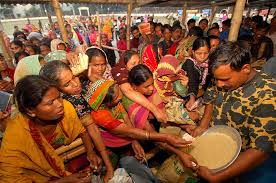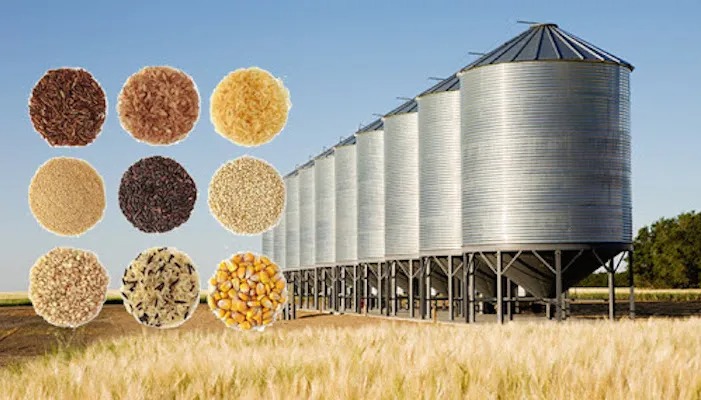
Food is a basic requirement for the survival of every human being. Abraham Maslow an American psychologist propounded the human needs theory, which categorizes food, clothes, and shelter (house) as basic needs. The demand for food can force individuals into crimes. Its continuous low availability can lead to civil war. Rice and wheat are stapled foods of many countries throughout the world including India. The rice-wheat crop rotation adopted in the indo-Gangetic plains serves as the food bowl of the country. In our country, Paddy is considered a water-depleting crop and policymakers are advocating a change in cropping patterns, especially Paddy. The government once motivated farmers, to adopt this crop and introduced the concept of MSP to stabilize the price. The procurement of the grains at a given price was required to feed the public distribution system. In turn, farmers got assured income, which further motivated them to increase their productivity to a maximum level. Rice being a water-loving crop is suitable for high rainfall areas. Still, due to economic reasons, it is now cultivated in semi-arid zones with the help of underground water. This incentive of higher production made the country self-sufficient and fulfilled the stores up to the brim for a number of years. It is more than 35 years now that the Punjab government wants to reduce the area under Paddy but failed. At the same time, the central government increases the target for production but raises questions on quality and offers a lower price for the produce. In a way two central ministries, the ministry of agriculture and the food ministry work in the opposite direction, the first one interested in higher production and the latter one not interested in procuring the increased production. After a long time, this season (2022) the food ministry’s advice came to farmers to produce more rice, because all the surplus food reserves have been exported and are likely to be consumed. In the previous 35 years sometimes drought/floods in the country came to the rescue of Punjab / Haryana / western UP farmers. The CACP (Commission for agriculture costs and prices) in February 2022 made a recommendation to the government that it should procure only that much quantity to fulfill the requirement under the national food Security Act 2013. God had some different plans, in mid of March suddenly there was a rise in temperature which lead to decreased wheat yield by almost 3 to 4 quintals per hectare. The government procured the wheat on the previous pattern and was ready to export apprehending the worldwide shortage due to the war between Ukraine and Russia.

The plans were made to send teams to countries facing food crises and check the food safety standards. The government suddenly banned all exports of wheat on 13th May 2022. But till the ban came into effect 4.5 million ton was already exported. The condition of the ban was such that all those who have a Letter of credit (LC) before the date will be allowed to export. This left many exporters in the lurch who even requested the government to allow them some quantity but all efforts went futile. On the other hand, the new entrant, reliance on exporters who started the export business of food grains in 2021 had LC and was able to export. Thus reliance became 2nd largest exporter of wheat in India.
The government even asked Punjab and Haryana to extend the procurement dates for wheat till 31st May 2022. This resulted in additional procurement of 46000 metric tons. The main reason was that government agencies procured almost 18.8 million tons of wheat which were almost half of what was procured last year. The actual reason was a decrease in yield and traders apprehended the shortage worldwide and purchased wheat from Bihar, Uttar Pradesh, and Madhya Pradesh. No doubt govt stopped the export of wheat the traders found another way out by exporting wheat flour. The exports of wheat flour were 95167 tons from April to June 2022 as compared to 26000 tons in the previous year. Thus the price of wheat flour started rising in the domestic market and the government put a ban on the export of wheat flour also.
The effect of the ban was that at one time prices of wheat fell in local markets, hardly making any difference to farmers who were not having anything with them. The price again rose to Rs 2375 per quintal by 26-27 July 2022, but still lower than the international price which was Rs 3000 per quintal, and our wheat even after reaching ports was fetching only Rs 2600-2700 per quint. By that time the wheat which was locked in the port of Odisha (Ukraine) was allowed to move to various countries under the UN treaty of giving safe passage by Russia, Ukraine, and Turkey. The first installment of 26527 metric tons reached Tripoli, Lebanon, and subsequently, the rest of the stored grains started reaching different ports easing the food crisis. It is expected that wheat from the USA, Russia, Australia, and Canada will be reaching markets in October which is likely to lower wheat prices. People worldwide are cutting down on wheat consumption in favor of rice. As per Reuters, people of the Middle East and Africa have reduced the consumption of wheat by 7 to 8%. Similarly, Pizza hut in Japan has introduced a new range of pizza with a base content of rice to gauge the people’s reaction, so will it be up to their expectations or not?
The statements which raised eyebrows were that on one hand government banned wheat export but at the same time sought permission from WTO to export the wheat procured by it on MSP for PDS (Public Distribution System). Had the government got a surplus why did it put a ban on exports, rather than seeking permission they would have easily allowed private exporters to export, and when they have exported government could easily sell their stock in the domestic market for use in the country and put a ban on exports. The question can be raised on the permission from WTO when the govt has only 28.51 million tons of wheat in its stock just one million tons in excess of stock required under the National Food Security Act 2013.
The govt in order to cope with a shortage of wheat introduced rice in PDS and Pardhan Mantri Garib Kalyan Anna Yojna and it allotted 5.5 million tons of rice to states for distribution. At the same time, govt is reducing import duty on wheat, giving a clear indication that to check the hovering food crises the govt wants to import almost 5 to 10 lakh tons of wheat but still there is no clarity on air. If it happens it will be the same situation in which we were in 2006-07 and narrowly escaped in 2008.
The rice which is fastly supplementing the wheat world over may be meeting the same fate in India during the ongoing season, the reason being the expected fall in the production of rice by 10 to 12 million tons in the country. This fall is expected due to an 8% fall in area under rice due to floods at the start of the monsoon and low rainfall in West Bengal and Uttar Pradesh, where it was erratic or late. The late sown areas will also have yield loss. As per govt records till July 2022 it was having 31.5 million tons of rice in stock which came down to 24.4 million tons by 1st September, in addition, there were 16.1 million tons of unmilled paddy which will bring about 10 million tons of rice. Sensing the rise in prices the government ordered a 20 percent export duty on non-basmati varieties and put on a complete ban on the export of broken rice. India’s price of Basmati is also on a sharp rise but uncertainty looms about whether it will benefit farmers when a new crop arrives in the market.
The total share of Indian rice in the world market is 40% and that of broken rice is 60%. Such a situation came when the international price of rice has already moved up from $350 to $450 per ton. This is a clear indication of the looming food crisis. Under such a situation there is a great opportunity for India to produce more and export to cover up the trade deficit which has already reached up to two lakh crores per month. To produce more the only incentive which will work is the assured price of agricultural produce. In the midst of the world food crisis, our Niti-Ayog is advocating zero-budget farming which means primitive agriculture without any input. Whether the decision of Niti-Ayog is good for the country, readers are to judge themselves.
Dr Amanpreet Singh Brar
9653790000